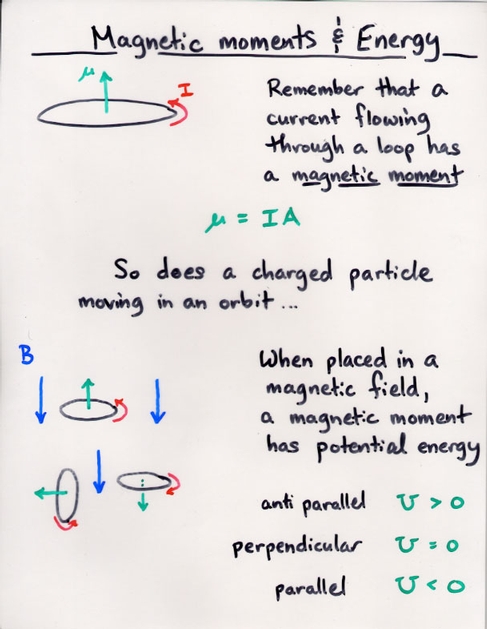
 Copyright © Michael Richmond.
This work is licensed under a Creative Commons License.
Copyright © Michael Richmond.
This work is licensed under a Creative Commons License.

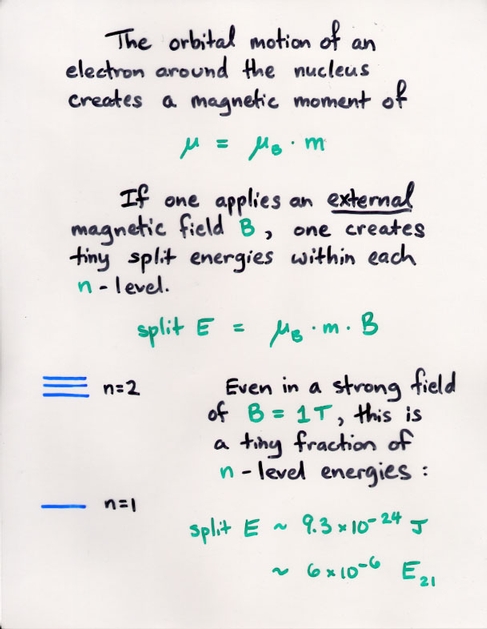
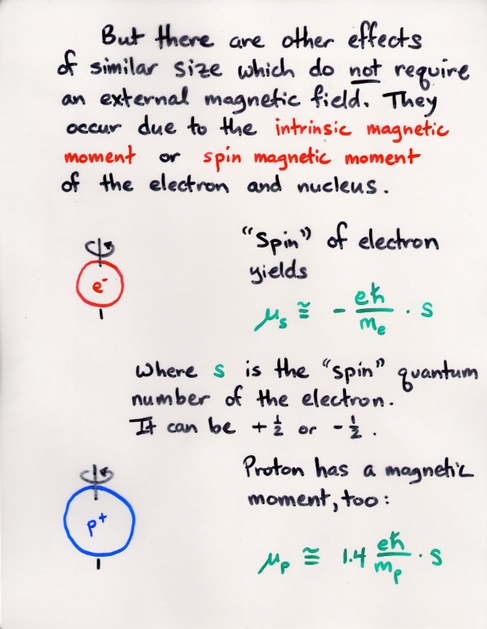
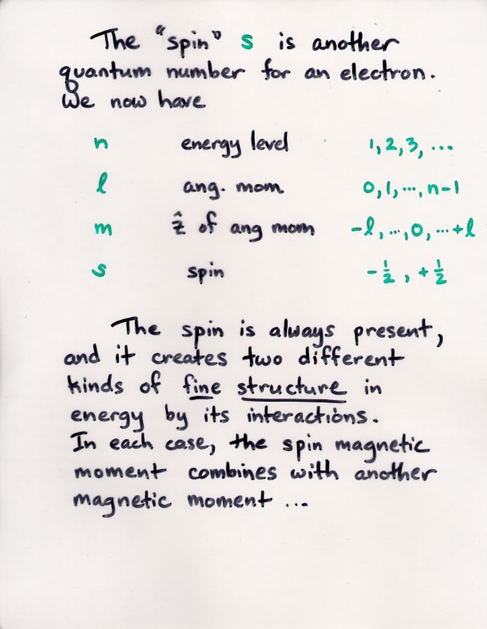
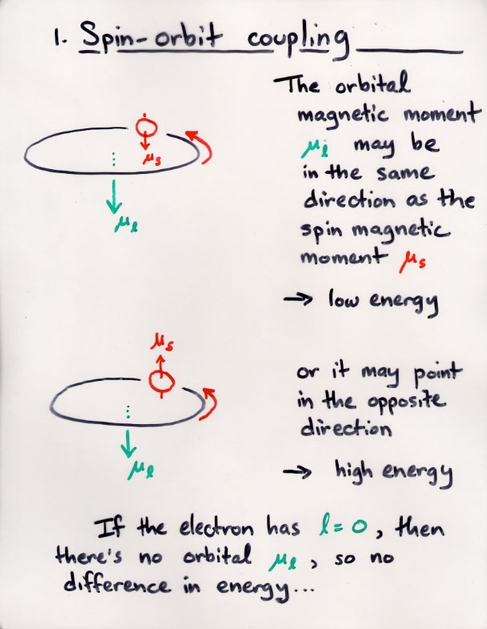
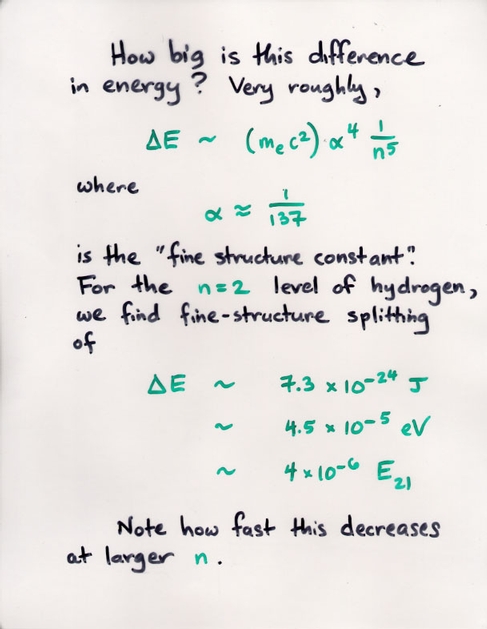
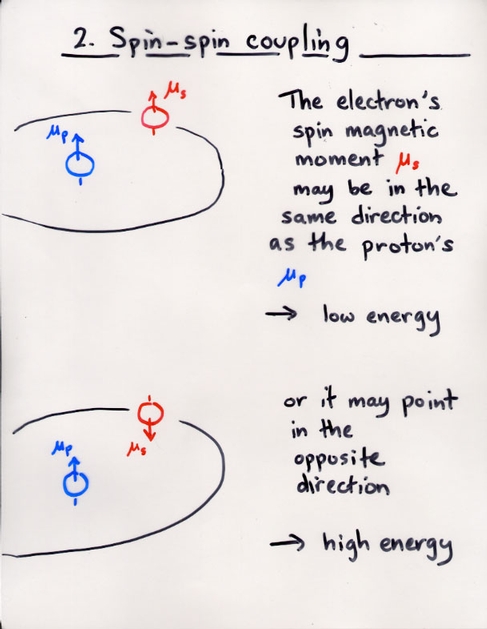
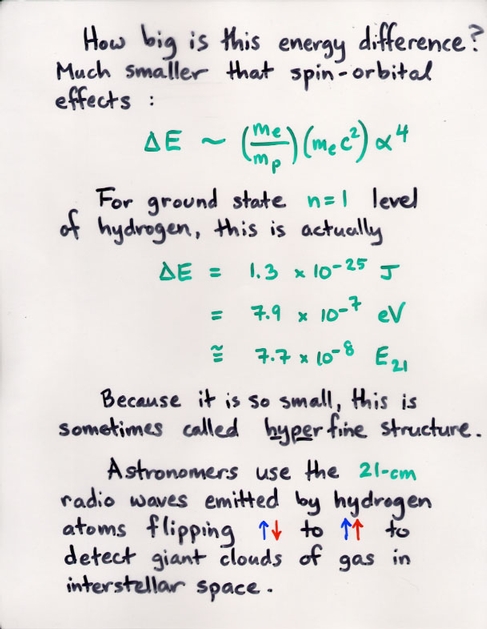
The Milky Way galaxy is in some ways a crowded place: it contains stars and planets, giant clouds of gas and dust. If we try to look towards the center of the galaxy with our eyes, in visible light, we see something like this: (a closeup view, showing only the region near the center of the galaxy):
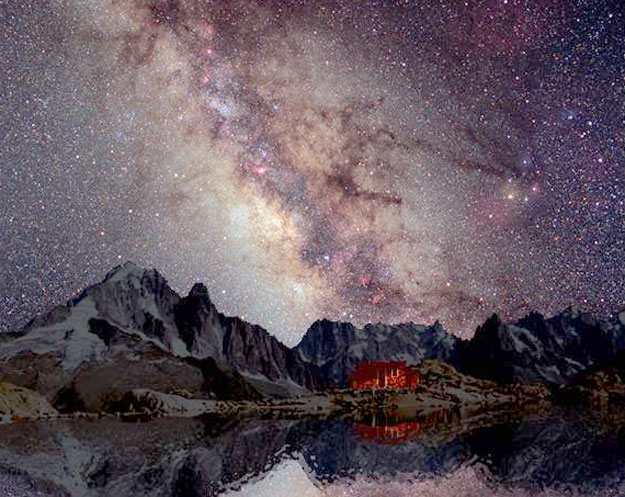
Our view towards the center of the galaxy and along the plane of the galaxy is blocked by dense clouds of dust; they appear as black patches in the sky:
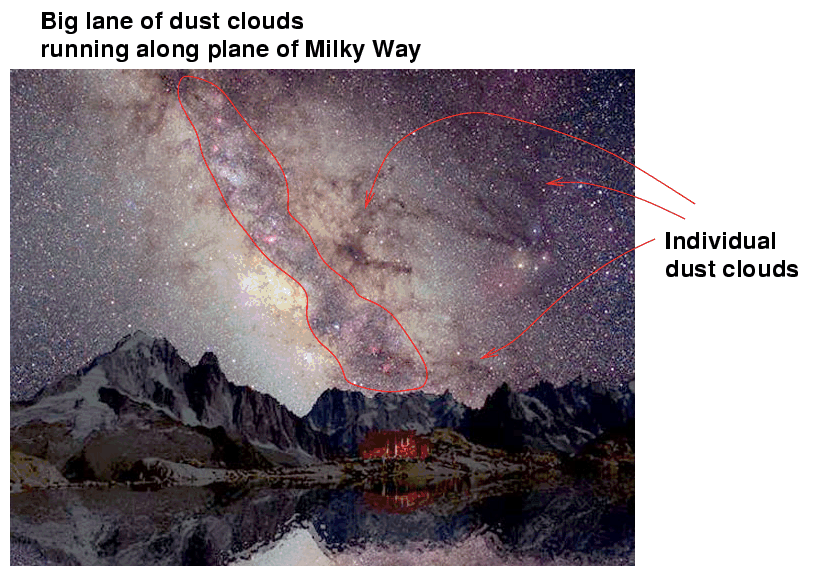
Ordinary visible light waves are blocked by the dust clouds. But long-wavelength electromagnetic waves, such as radio waves and microwaves, can move through clouds of dust. So, if we use a radio telescope
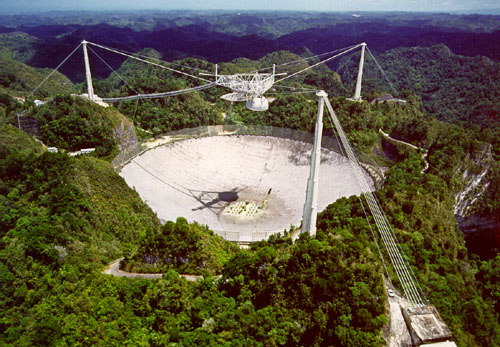
tuned to some frequency at which gas emits radio waves, then we might be able to see through the dust, all the way through the galaxy. But to what frequency should we tune our receivers?
One good choice is the frequency corresponding to the energy difference between the hyperfine levels of the ground state of neutral hydrogen. Note that I am going to switch from drawing the MAGNETIC MOMENT created by the spin of each particle -- proton and electron -- to the SPIN VECTOR of each particle. Most discussions of this particular transition use the "spin vector" notation and imagery. For the proton, the magnetic moment lies in the same direction as the spin vector; but for the electron, because it has a negative charge, the magnetic moment is opposite to the spin vector.

Collisions between atoms in interstellar space are gentle (because the atoms are moving so slowly, because it is cold out there ...), but sometimes provide enough energy to excite the hyperfine level of the ground state.
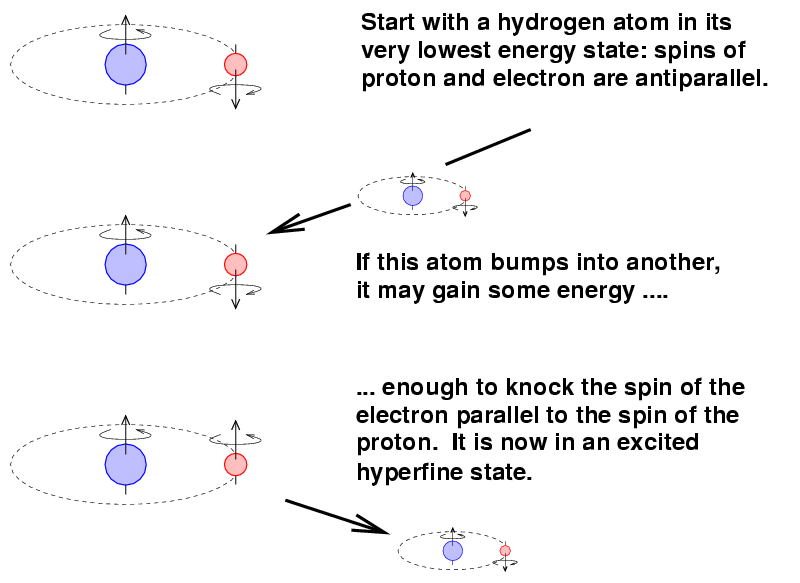
If we wait long enough (and it takes a long, long, time), the spin of the electron will eventually flip, so that it is antiparallel to the proton's spin again. As the atom makes this transition to a lower energy state, it emits a photon with the difference in energy levels.
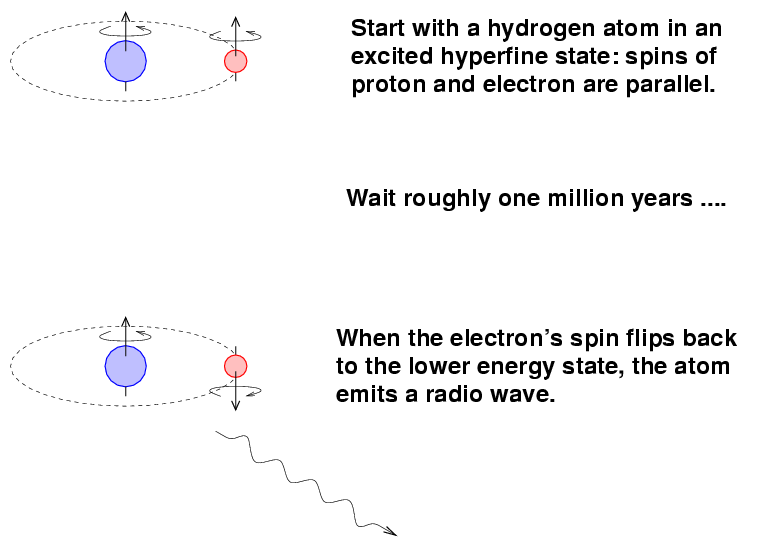
Using our radio telescopes, we can detect these waves. Where we see lots of waves, we know there must be lots of very cool, very thin, neutral hydrogen gas. We can make maps of the sky, showing regions full of neutral hydrogen gas. It provides a very different view of our galaxy. Compare the visible picture of the entire galaxy ...
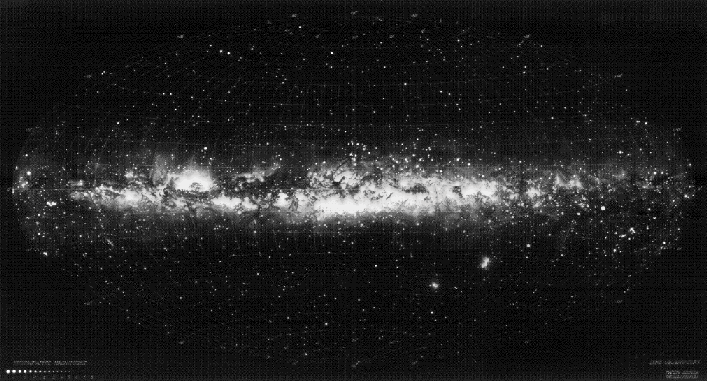
to this image taken in the light of neutral hydrogen:
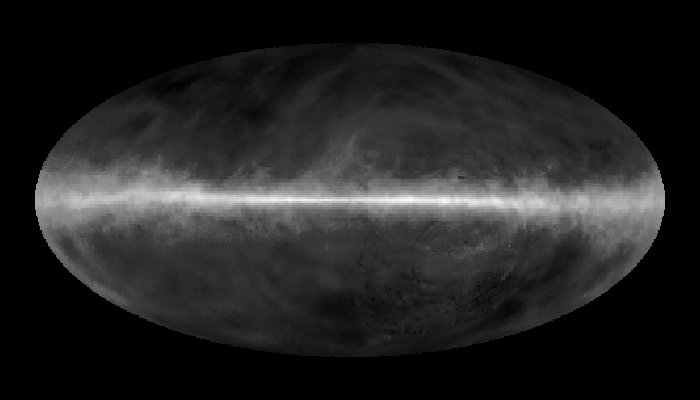
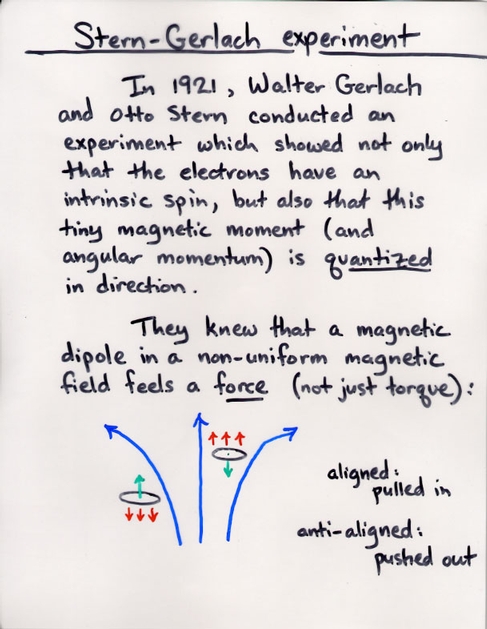
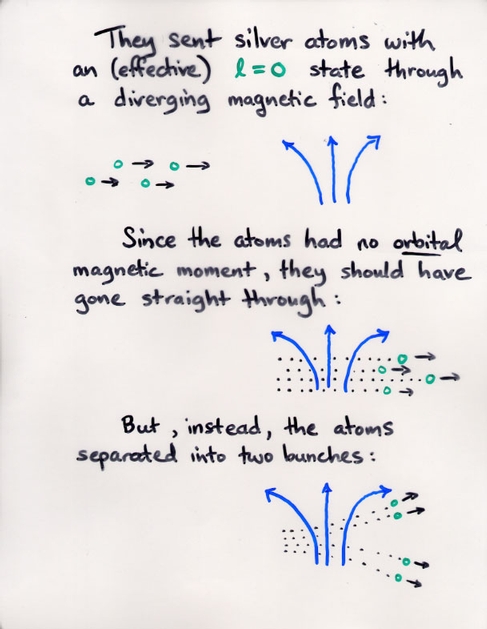
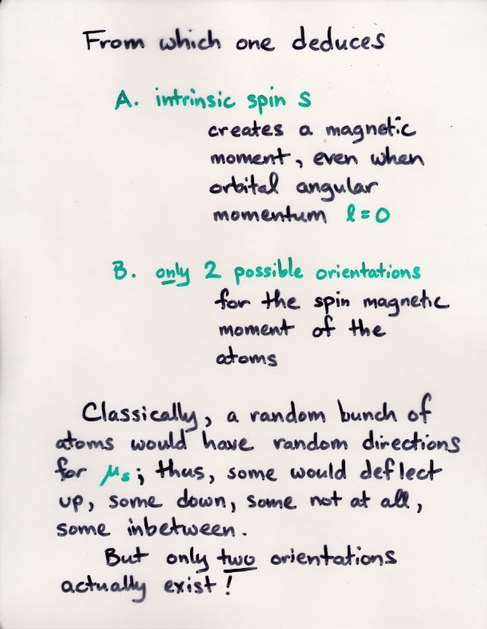
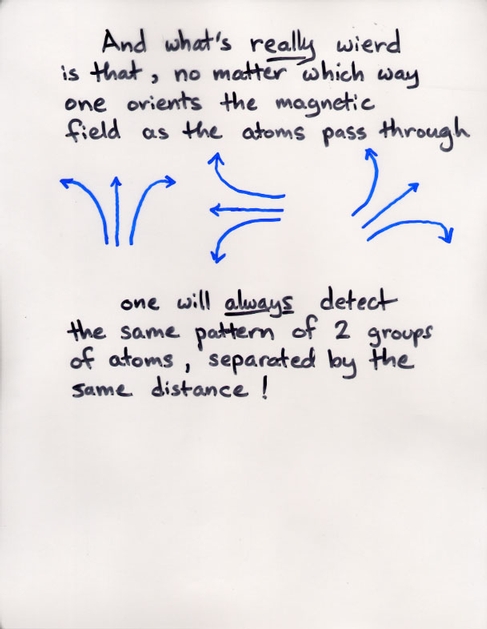
 Copyright © Michael Richmond.
This work is licensed under a Creative Commons License.
Copyright © Michael Richmond.
This work is licensed under a Creative Commons License.